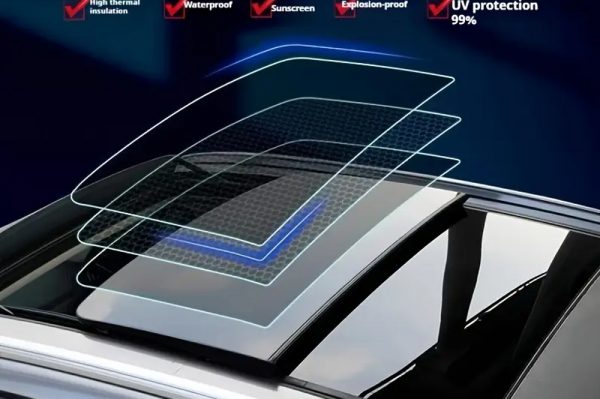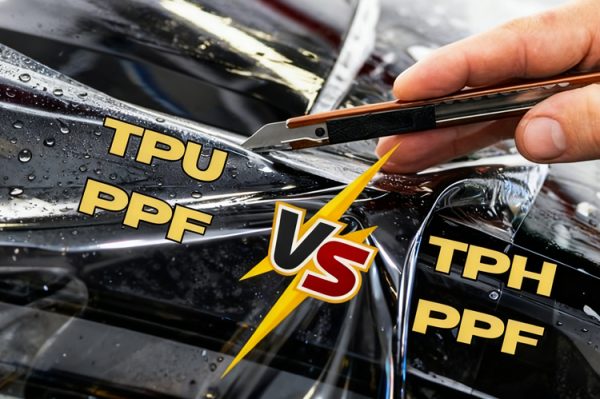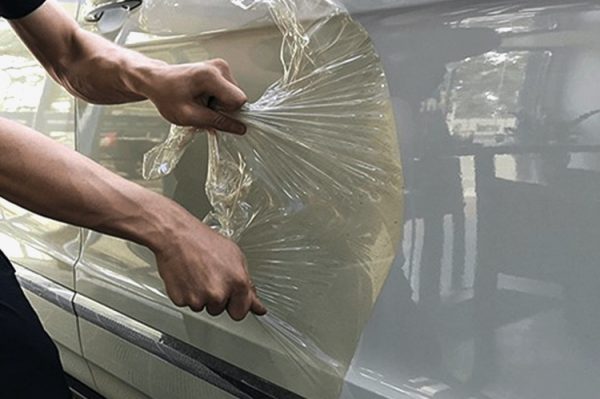
Discover the main types of car window tint — from dyed and ceramic films to metallic and hybrid options. Learn their pros, cons, and how to choose the best tint for your car.
What Is Car Window Tint?
Car window tint is a thin protective film applied to vehicle windows to reduce sunlight, UV exposure, and heat.
Beyond its sleek appearance, tint film improves comfort, enhances privacy, and protects your car’s interior from fading or cracking.
In the automotive world, choosing the right type of car window tint makes a big difference in both performance and aesthetics.
Main Types of Car Window Tint
There are several kinds of car window tints available on the market, each designed with unique materials and features.
Here’s a breakdown of the most common types of car tint films you should know.
1. Dyed Window Tint
Description:
Dyed tint is made from multiple layers of dyed film that absorb sunlight. It’s the most affordable option and ideal for drivers looking for a darker look.
Pros:
-
Budget-friendly
-
Good privacy and glare reduction
-
Uniform color appearance
Cons:
-
Limited heat rejection
-
May fade or discolor over time
Best For:
Car owners who prioritize appearance and affordability over advanced protection.
2. Metallic Window Tint
Description:
This film contains metallic particles that reflect heat and UV rays effectively. It offers strong heat rejection and a shiny, reflective look.
Pros:
-
Excellent heat and UV rejection
-
Long lifespan
-
Scratch-resistant surface
Cons:
-
Can interfere with GPS, radio, or phone signals
-
Highly reflective appearance may not suit every taste
Best For:
Drivers in hot climates seeking maximum cooling performance.
3. Carbon Window Tint
Description:
Carbon tint uses carbon particles instead of metal, avoiding signal interference while providing deep black color and heat reduction.
Pros:
-
High heat and IR rejection
-
No signal interference
-
Matte, non-reflective finish
-
Longer lifespan than dyed film
Cons:
-
Slightly more expensive than dyed tint
Best For:
Car owners wanting durability, privacy, and balanced performance.
4. Ceramic Window Tint (Premium Type)
Description:
Ceramic tint is the most advanced and premium type of car window film. It uses nano-ceramic technology to block UV and infrared rays without compromising visibility.
Pros:
-
Blocks up to 99% UV rays and 95% infrared heat
-
No signal interference
-
Clear visibility day and night
-
Long-term color stability
Cons:
-
Higher price point
Best For:
Luxury vehicles or anyone seeking top-tier heat and UV protection.
5. Hybrid Window Tint
Description:
A blend of dyed and metallic layers, hybrid tint combines the best of both worlds: color depth and heat rejection.
Pros:
-
Balanced performance
-
Less reflective than full-metallic
-
Good value for money
Cons:
-
Slight color shift over time
Best For:
Drivers who want an all-around tint solution.
Comparison Table – Car Tint Types
| Type | UV Rejection | Heat Rejection | Signal Interference | Appearance | Price Range |
|---|---|---|---|---|---|
| Dyed | ★★☆☆☆ | ★★☆☆☆ | None | Matte Black | $ |
| Metallic | ★★★★☆ | ★★★★☆ | Possible | Shiny Reflective | $$ |
| Carbon | ★★★★☆ | ★★★★☆ | None | Matte Deep Black | $$$ |
| Ceramic | ★★★★★ | ★★★★★ | None | Crystal Clear / Dark | $$$$ |
| Hybrid | ★★★☆☆ | ★★★☆☆ | Low | Semi-Reflective | $$ |
Choosing the Right Tint for Your Vehicle
When selecting the best car window tint, consider these factors:
-
Local Laws & VLT (Visible Light Transmission)
-
Check your country or state’s regulations before installation.
-
Common VLT options: 5%, 20%, 35%, 50%, 70%.
-
-
Climate Conditions
-
Hot regions benefit from ceramic or metallic tint for better heat rejection.
-
Cooler climates can use dyed or carbon tints for privacy and aesthetics.
-
-
Signal Sensitivity
-
If you rely on GPS or phone connectivity, avoid metallic tints.
-
-
Budget & Longevity
-
Dyed = budget-friendly
-
Carbon & Ceramic = long-term investment
-
Benefits of Quality Car Window Tint
-
Improved Comfort – Reduces cabin heat and glare
-
UV Protection – Blocks up to 99% of harmful UV rays
-
Enhanced Privacy – Keeps your interior hidden from outside view
-
Better Visibility – Reduces eye strain and improves night driving
-
Interior Protection – Prevents leather, plastic, and dashboard fading
Installation Tips
-
Always install in a dust-free environment
-
Clean windows thoroughly before applying
-
Use a professional installer for curved or large glass areas
-
Allow film to cure for 3–5 days before rolling down windows
FAQs – Types of Car Window Tint
Q1: Which type of tint lasts the longest?
A: Ceramic and carbon films usually last 10+ years with minimal fading.
Q2: Is darker tint always better?
A: Not necessarily. Lower VLT means less visibility. Always balance privacy and safety.
Q3: Does window tint affect visibility at night?
A: High-quality ceramic and carbon films maintain clear visibility even in low light.
Q4: Can I mix different tint levels for front and rear windows?
A: Yes, many users combine 70% (front) and 20% (rear) for a balanced look.
Each type of car window tint offers different strengths.
If you’re looking for affordability, go for dyed or hybrid film.
If you prefer long-term performance and luxury, ceramic tint is your best choice.




